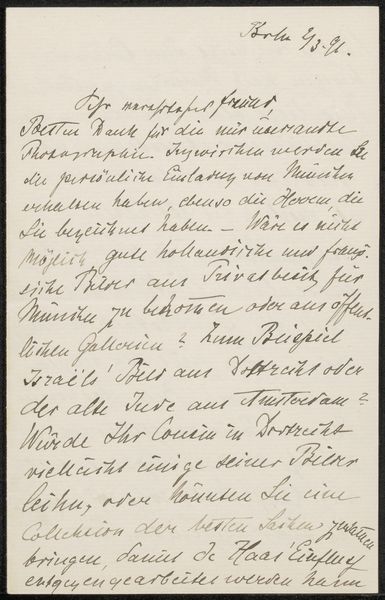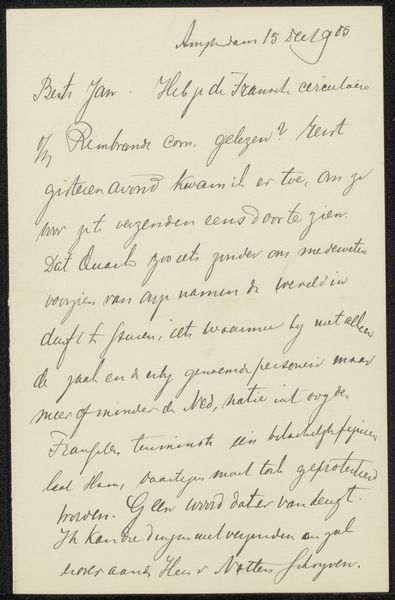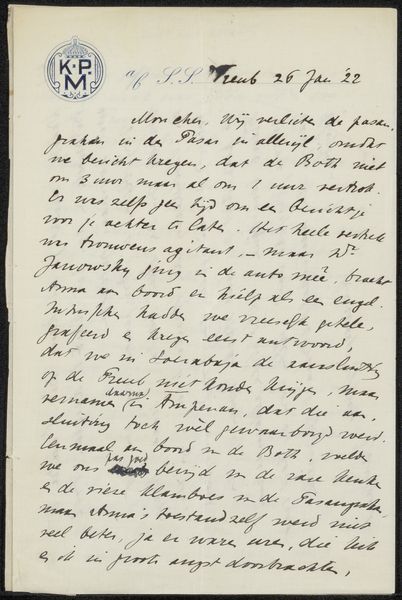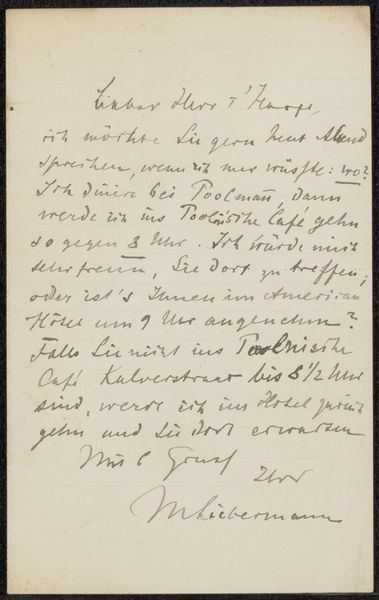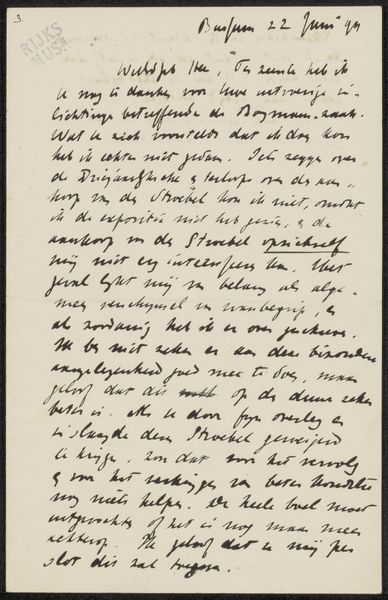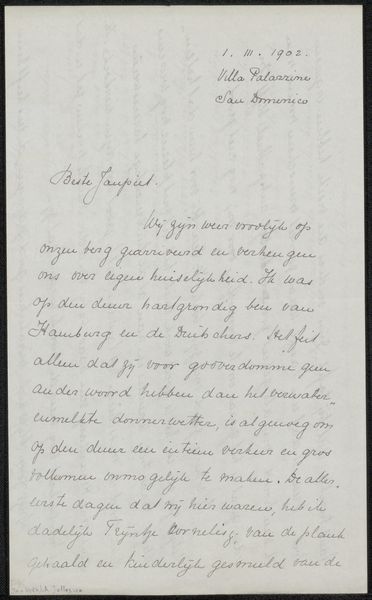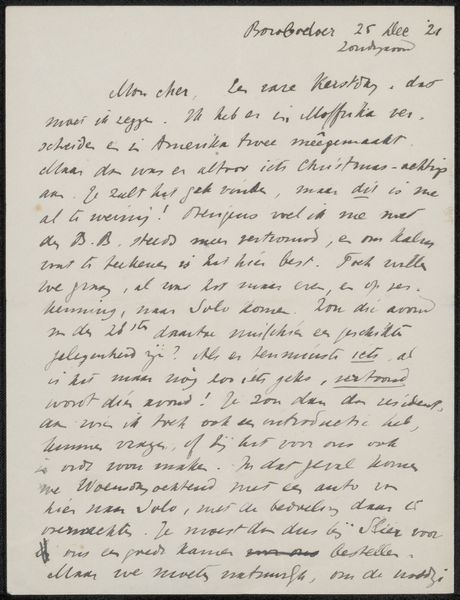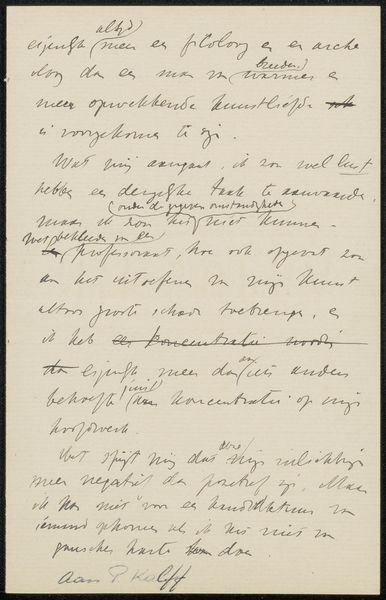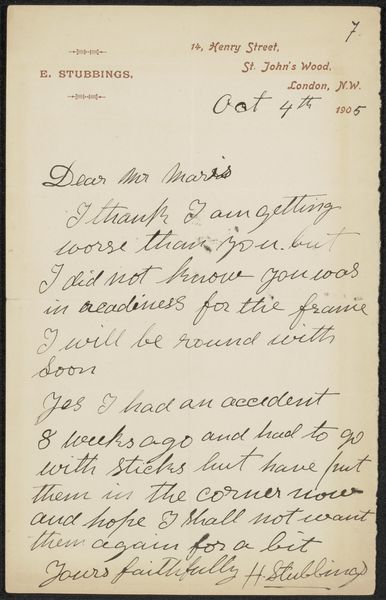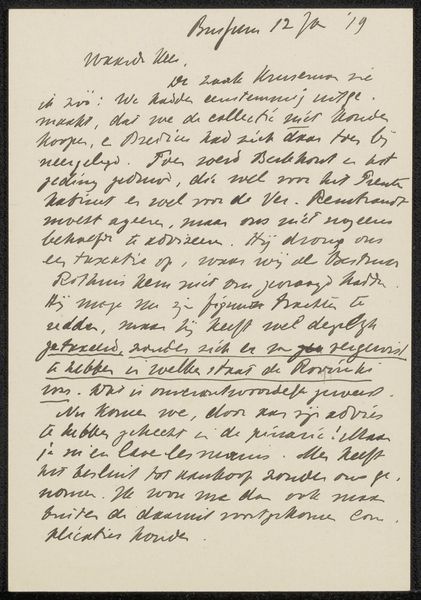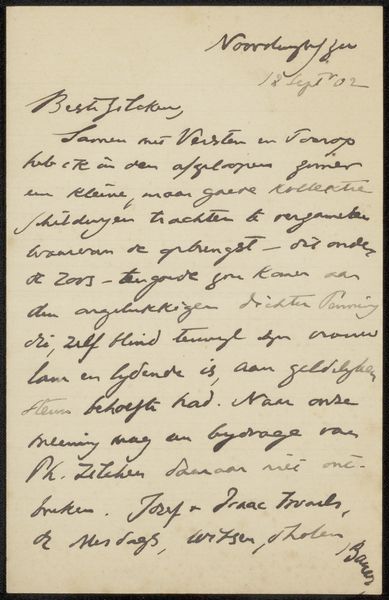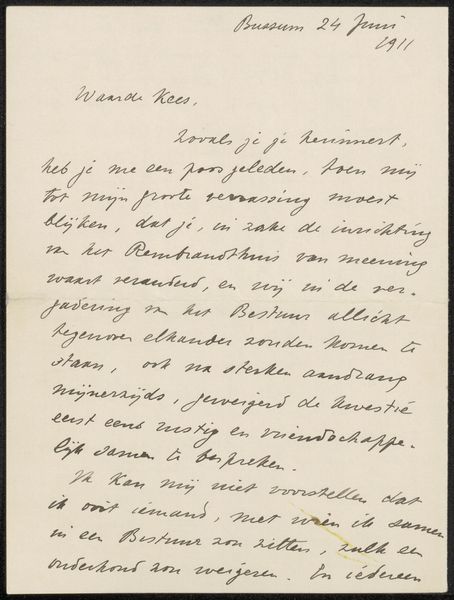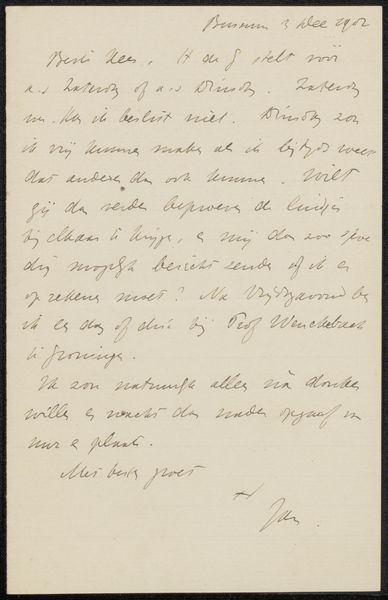
drawing, paper, ink
#
portrait
#
drawing
#
paper
#
ink
Copyright: Rijks Museum: Open Domain
Curator: We’re standing before a letter by Jan Veth titled "Brief aan Christiaan Bernhard Tilanus (1857-1942)," created sometime between 1920 and 1928. It's ink on paper. What’s your initial response? Editor: It feels incredibly personal and fragile. The handwritten script is so intimate. The slightly aged paper speaks to the passage of time and makes me think of how we communicate today versus the early 20th century. Curator: This letter offers a window into the social circles of the time and the artistic network Jan Veth belonged to. He was a significant figure, deeply involved in the cultural and political discourse of the Netherlands. Christiaan Tilanus, to whom the letter is addressed, was another well-known figure from that period. Editor: Looking at the contents, I wonder about the relationship between Veth and Tilanus. Was this a professional communication or a personal note exchanged between friends or acquaintances discussing art or matters related to a particular community? Curator: I see it within the broader context of how elites, especially within the art world, communicate, share, and shape their political views and exert influence. The letter acts as an object embedded within a complex network of individuals and power dynamics of its time. Editor: Indeed. What I find striking is the contrast between the immediacy and tangibility of this handwritten letter, and today's digital communication, which can often feel detached. Also, what this letter says about archival efforts! Think about what remains private or public as society changes. Curator: The materiality and accessibility of the handwritten letter do offer different insights, which is key to how we understand and reassess power, influence, and accessibility concerning artwork or artistic intent. Editor: Exactly. It’s fascinating how this seemingly simple document opens up broader discussions about art, society, communication, and historical dynamics. Curator: I find myself pondering the delicate and subjective experience of art through correspondence, emphasizing its communal and discursive facets within broader intellectual communities and cultural institutions.
Comments
No comments
Be the first to comment and join the conversation on the ultimate creative platform.

